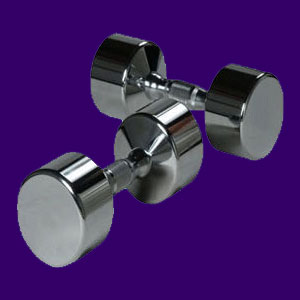
Weight lifting back pain is a common side effect of resistance-based exercise. Weight training can be defined as using free weights, universal machines or Bowflex/Soloflex machines to build muscle mass and increase skeletal density. Free weights are statistically the most dangerous of all types of resistance training.
Improper lifting technique, lifting when you are too tired or lifting more than you are capable of doing are the three usual reasons for injury or pain to occur. Damage may occur to the spine itself, to the back muscles, to the connective tissues or to other structures in the body, such as the internal organs. In some cases, significant trauma, like hernias or intervertebral disc damage, may occur during weight lifting.
This article explores the risks and benefits of resistance training and how the activity can create or exacerbate back pain in some patients. If you want to prevent or treat weight lifting back pain, this is the right article for you.
Weight Lifting Back Pain Causes
The spine is designed to easily handle extra weight. It is healthy to use moderate weight training to increase muscular and skeletal strength. However, there is a point when the weight lifting becomes detrimental. Using heavy weights, or lifting when your muscles are overtired, are very common causes of weight lifting back pain.
Most injuries caused by weight training are muscular. It is relatively easy to sprain a back muscle or ligament. It is important to allow this type of muscular injury to heal. If not, the injury can worsen and become a chronic back pain condition.
Repetitive injuries in the same muscle will cause scar tissue to develop. This scar tissue might cause pain problems as you age.
Certain exercises put tremendous pressure on the neck or lower back. Pinched nerves are common to experience in the neck area. Spasming muscles can impinge on a nerve and cause moderate neurological symptoms.
Lower back injuries are the most serious of all weight training back pain conditions. It is crucial not to lift heavy weights with a bent back. The vertebrae are much stronger when the spine is straight.
The force of bending alone puts increased pressure on the lumbar spine. If you add weight to this posture, you have exponentially increased lower back spinal pressure. This is a perfect recipe for serious lower back problems.
Herniated discs are often the result of a sudden increase in pressure in the lower back region. A herniated disc injury can be serious and may require moderate to drastic treatment. It is far easier to prevent this type of injury than to treat and rehabilitate it.
Prevention of Weight Lifting Back Pain
Here are some helpful pointers which can help to prevent back ache caused by weight training:
Make sure to always use good posture and form when lifting.
Do not rush through a set or through an individual repetition.
Do not attempt more weight than you are capable of lifting.
Do not workout alone, especially with free weights. Always have a spotter and make sure that your spotter can actually hold the weight you are lifting if need be.
Do not twist your waist when lifting or putting down weights.
Use your legs to lift heavy weights and do not lift with a bent back.
Wear gloves to increase the friction of your grip and to prevent weights from slipping or falling.
Make sure to wear comfortable shoes that will give you adequate traction.
Always stay hydrated and never over do it.
Weight Training Benefits
Weight training is an excellent way to build muscle mass. It is also the best way to develop strong bones and muscles, through muscle/skeletal loading. Regular weight training will reduce the risk of osteoporosis significantly.
Weight training is also an great way to increase direct circulation to individual muscle groups using targeted exercises. Increased circulation will provide temporary relief from oxygen deprivation back pain. If you want to have a beautiful body, then weight training is one of the best ways to get there. There are few physical activities which provide so much potential reward for such minimal investment of time.
Weight Lifting Back Pain Experiences
I never liked weight training through most of my fitness career. I rarely used heavy resistance training myself. I also rarely used weights in my personal training of others. I always preferred exercises that used the body’s own weight as resistance. Recently, I have changed my mind. Over the last 5 years, I have added more resistance work into my own workout routines. I prefer to keep the weights moderate and the repetitions higher. I do not do any power lifting and usually keep the weight to about half of my total ability to lift.
I have found that my back muscles, and all my muscles, have increased in size and strength. I have never injured myself while lifting and would highly recommend sensible resistance training for almost everyone. Weight lifting is a great activity that does not have to be the source of any pain. Don’t get carried away, show off or go to extremes. Common sense should be your guide. Make sure to consult with your doctor before beginning any program of resistance training.
Resistance training can be a wonderful and extremely rewarding part of a healthy lifestyle. Just be sure to fully understand exactly what you are doing and always keep focused on the exercise at hand. Losing concentration for even a moment has caused many fitness advocates to incur serious injury.





